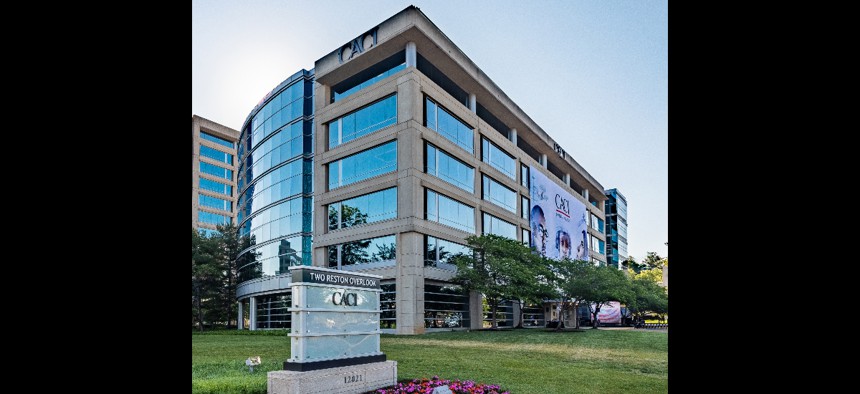CACI's rationale for speeding up its space tech investments

The exterior of CACI's corporate headquarters in Reston, Virginia. Courtesy of CACI.
CEO John Mengucci tells Wall Street that optical communications is a "burgeoning 10-year market" with meaningful contributions to growth coming in 2025 and beyond.
Between 2019 and 2021, CACI International used a pair of acquisitions to fast-track its expansion efforts across certain corners of the space domain and especially in data transmission.
A similar theme of speeding up investments in the technology is playing out again in 2024.
During CACI's fiscal second quarter earnings call with investors Thursday, chief executive John Mengucci said higher order volumes for its optical communication products are "coming sooner than we expected."
CACI has therefore "accelerated (research-and-development) investments" for the technology itself and the capability to produce in volume, he said.
Even still, CACI evidently sees the space leg of its technology and product strategy as in transition between the initial bet and potential payoff phase.
"We believe it's a burgeoning 10-year market, I'd say we're probably in the seventh-to-eighth inning of investment," Mengucci said. "We're probably in the early second inning of growth, so I see this as a business being a much more meaningful contributor... into '25 and beyond."
Reston, Virginia-headquartered CACI's photonics business was born out of its acquisitions of LGS Innovations and SA Photonics. In the context of space, optical communications refers to the use of light to wirelessly transmit data for communications and computer networking functionality.
Along with prime government contracts, CACI has become a supplier of optical communication and other smaller-form space technology to the satellite industry.
On the earnings call, Mengucci referred to those customers as the "satellite primes." Many of those companies are on-contract for the Space Development Agency's multi-tranche effort to stand up a new military satellite network it calls the Proliferated Warfighter Space Architecture.
CACI is on-contract to deliver terminals for Tranches 0 and 1, Mengucci said, adding the company is also working with two primes for the Beta and Alpha variants for Tranche 2.
But CACI's space play is not limited to the defense market. Mengucci said CACI's hardware featured in NASA's use of the ILLUMA laser communications system back in December to connect the International Space Station with its base ground station.
"Currently, our deep space optical communications technology is connected in transmitting data to Earth from a distance equivalent to the orbit of Mars, the furthest ever demonstration of optical communications," Mengucci said.
Fiscal second quarter revenue of $1.8 billion was 11.2% higher than the prior year period and was essentially all organic growth, while profit of $170.9 million represented a 1.5% year-over-year increase in EBITDA (earnings before interest, taxes, depreciation and amortization).
CACI lifted its full-year sales guidance to $7.3 billion-to-$7.5 billion, up from the prior $7.2 billion-$7.4 billion range and indicating expectations of 9%-to-12% growth. The EBITDA margin outlook is unchanged at the high-10% range.


